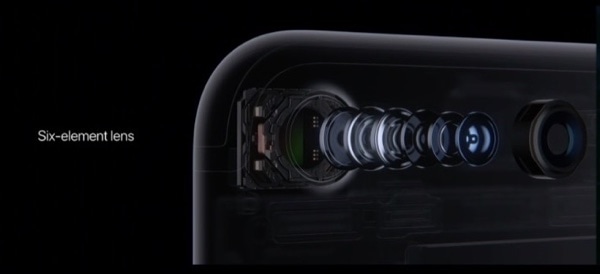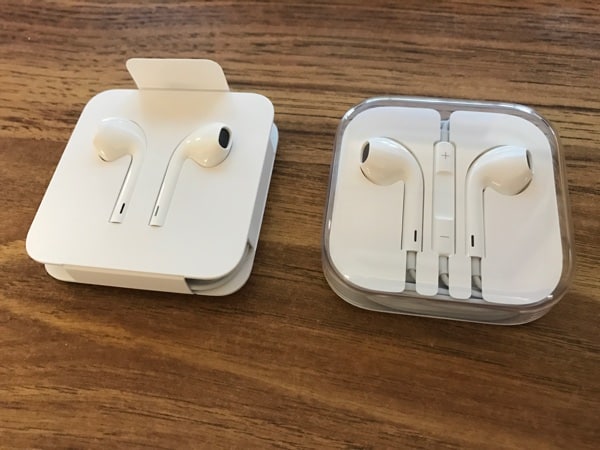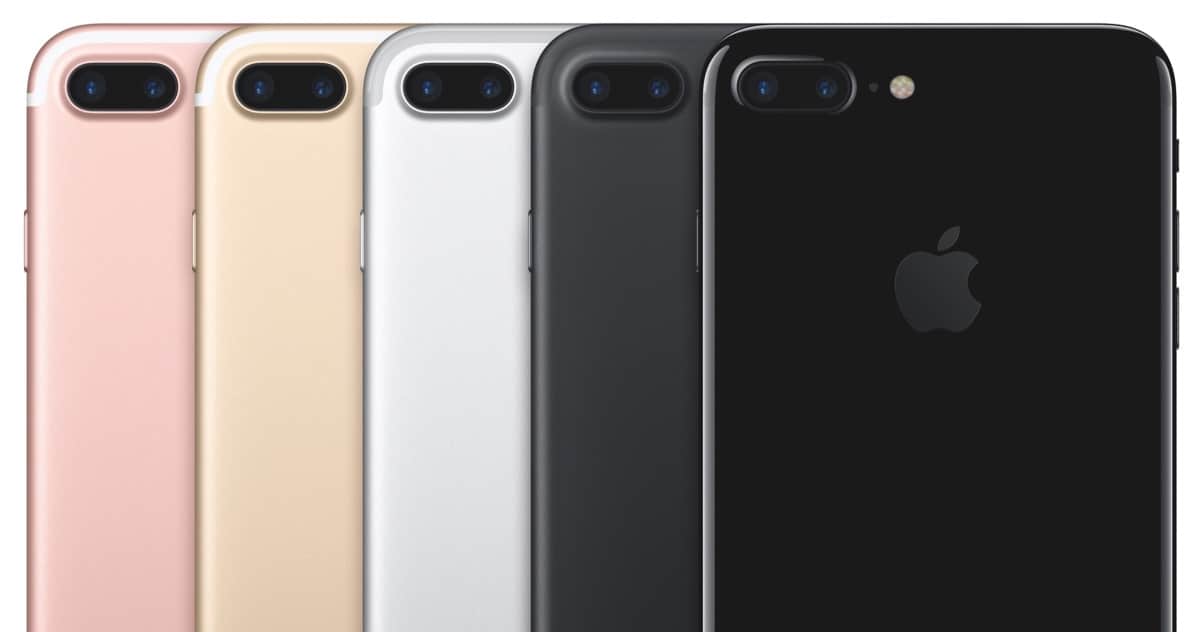Page 3 – The iPhone 7 Camera System

3. Camera. By now, there are lots of comparison photos on the internet, demonstrating the superiority of the iPhone 7 camera. Especially with red tones. I haven’t had much time to do testing myself, so I’ll just note a few things.
The 6s camera has a f-ratio of f/2.2. But the iPhone 7 is the same thickness. So the only way to make the lens system faster is to make the lenses bigger, a visible difference. on the outside. (And one reason you’ll probably need a new case.) The iPhone 7 is effectively f/1.8.
When you bend light more strongly, abberations are introduced. And so you need more lenses (6 versus 5) to correct for those abberations. Plus, that bigger, outermost lens has to be covered with a larger piece of sapphire. And yet, a feature gets folded in as a matter of course.
Here’s some detail on the image sensors made by Sony.
Next. I haven’t found out yet if each of those six lenses is multi-layer dielectric coated for high light transmission, but I’d say they almost have to be to meet Apple’s standards.
During the September 9 event, Phil Schiller said that this camera may be the best camera most customers own, and I think he’s right. Plus, last year, only the 6s Plus had optical image stabilization. This year, the base model, the iPhone 7 inherits that. If there’s one strong reason to upgrade, I think it would be the camera in the iPhone 7.
4. That 3.5 mm Audio jack. I consider this to be a tempest in a teapot. Apple has provided a technical path forward but also provided us with what we need in the interim: Lightning ear buds and an included adapter. Like the Home button, years form now we’ll look back and wonder what all the fuss was about. Meanwhile, Apple has made the iPhone water resistant. (Rated IP67 under IEC standard 60529.)
I have found, and I think most users will also discover, that the short adapter cable belongs with one’s favorite headphones, not the iPhone. So if you have several favorites, it’ll be worth the $9 to have an extra.

One thing that annoyed me is that the Lightning earbuds come wrapped in cardboard instead of a nice plastic case. It seems miserly, but then I’m told most people throw the plastic case away right away. And cardboard is probably more recyclable. So there’s that. However, I remain conflicted.
Here’s a thought. If you still have the plastic case from a previous iPhone, use that. That is, if you have the patience to fold up the cord.
5. Battery Life. One of the persistent complaints about the iPhone is that Apple continues to provide a faster system with more features but keeps making the device thinner. (This year, the 7 is actually the same thickness as the 6s, 7.1 mm.) How can that conflict be resolved?
The answer is the new A10 Fusion processor with four cores. There are two high-performance cores that are 40 percent faster than the A9. Plus, there are two high-efficiency cores that use 20 percent of the power of the other two cores. An Apple designed performance controller allocates tasks to the cores so that we get maximum performance when we need it and low power utilization when idle.
This is something no one saw coming, and it’s one of those brilliant engineering accomplishments that makes us want to join in and enjoy Apple’s continuous technical developments. One of the telltale signposts, I’ve noticed, is that right after I fully charge the iPhone 7, and leave it idle, it remains at 100 percent battery for a surprisingly long time. (The high efficiency cores are doing their thing.) The 6s would start to decline at a slow, but noticeable pace. Summary of specs: Internet use on Wi-Fi: iPhone 7: 14 hours. 6s: 11 hours.
That’s a 27 percent improvement. However, the battery is also bigger. iFixit reports: “This … 1960 mAh battery is rated for a capacity of 7.45 watt-hours, a notable increase from the 6.55 watt-hour battery in last year’s model.” So, roughly, the battery contributes 14 percent of the 27 percent overall. Power engineering is about aggregation of small improvements.
6. Weight. Despite the stronger battery, at 138 grams, the iPhone 7 is about 5 grams lighter than the 6s. That’s the weight of a U.S. Nickel. How can anyone feel that you ask? Jeff Gamet and I both feel it. It’s amazing. Does that really matter? No. The case you select will wipe that difference out. Still, I’m impressed.
7. AT&T Microcell. For the past few years, every time I upgraded to a new iPhone, I would have troubles with my AT&T microcell. It almost seemed like a ritual. This year, it was a flawless transition.
With AT&T Wi-Fi calling enabled, you may ask why I keep the microcell in operation. The answer is that, in my experience, the microcell has better voice quality and a much greater range than Wi-Fi calling. But it’s nice to have a fallback if the microcell goes off-the-air, as it occasionally does. (Both depend on an internet connection.)
Next page: Miscellaneous observations and final thoughts

It’s telling that Macworld (or what’s left of it) basically recommended “sitting out” this upgrade cycle, simply because of the missing audio socket.
That being said… I’m kind of impressed by how bright the screen is, and the lightning earphones seem significantly louder (and possibly better?) than regular earphones plugged into the adapter, which is a bit mysterious since the adapter seems to feature essentially the same DAC chip.
I do that because I have found that it keeps the cord from corkscrewing. It is harder in the pocket and can contribute to wearing out the fabric, no worse than a key fob though. I also keep ear buds coiled and wrapped inside of a change purse which isn’t so hard on pocket fabric.